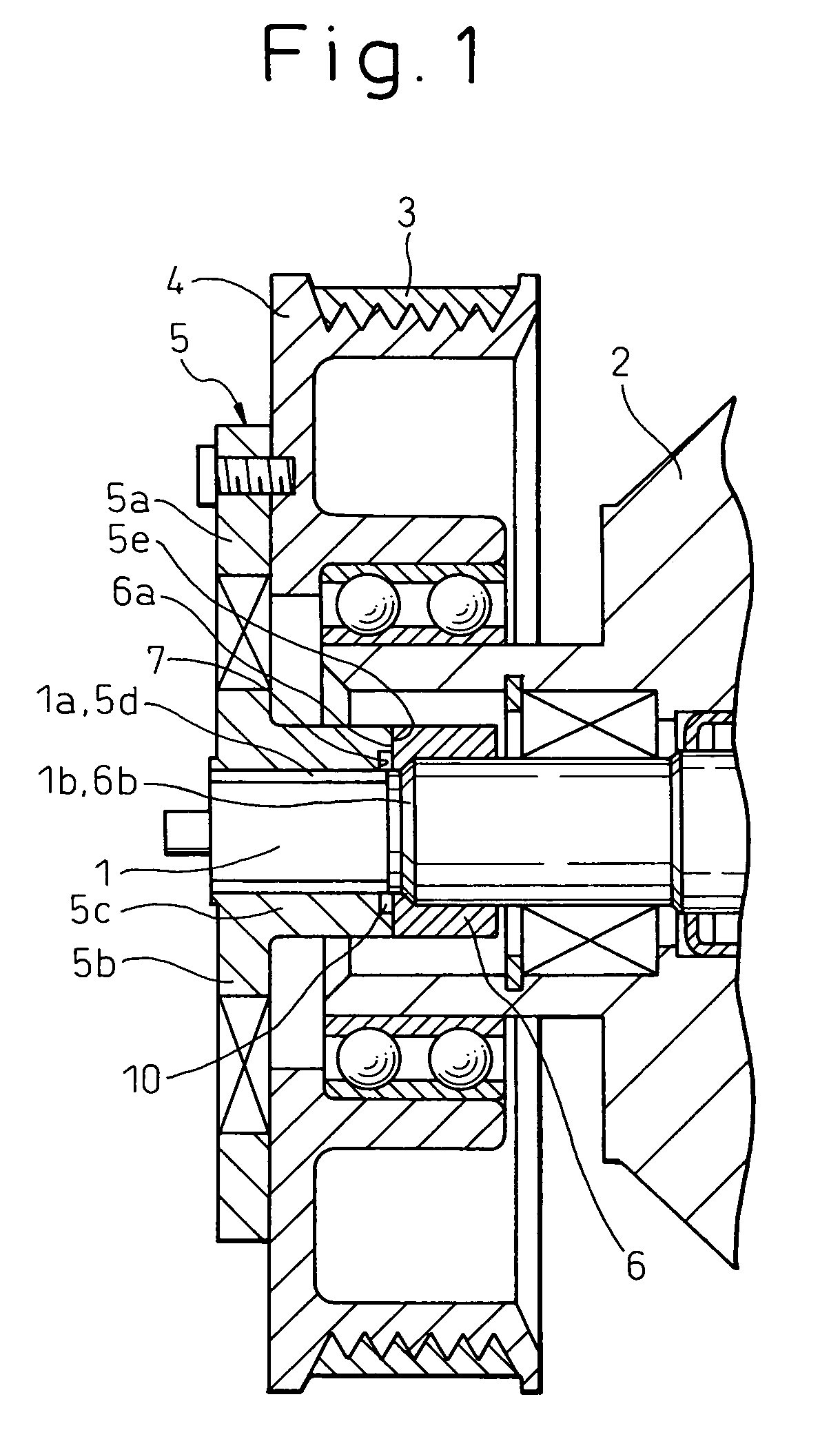Power transmission mechanism capable of preventing breakage of a rotating shaft
a technology of transmission mechanism and rotating shaft, which is applied in the direction of gearing, piston pumps, hoisting equipment, etc., to achieve the effects of preventing the breakage of the rotating shaft, preventing an excess tensile force, and reducing the number of components
- Summary
- Abstract
- Description
- Claims
- Application Information
AI Technical Summary
Benefits of technology
Problems solved by technology
Method used
Image
Examples
Embodiment Construction
[0021]A first embodiment of the present invention is explained below with reference to FIG. 1 and FIG. 2. FIG. 1 shows the general configuration common to the above-mentioned prior art and FIG. 2 is an enlarged view of only characteristic parts (important parts) in the first embodiment of the present invention. Concerning the details of the parts, shown in FIG. 1, that are common to the prior art, the explanation of the prior art described above also applies here.
[0022]In FIG. 1 and FIG. 2, reference numeral 1 denotes the rotating shaft of the refrigerant compressor 2, 1a denotes a male screw formed on the end part of the rotating shaft 1, and 1b denotes a tapered surface formed on a part of the rotating shaft 1. Reference numeral 3 denotes a belt that transmits a torque from, for example, a vehicle engine (not shown) to a pulley 4. Reference numeral 5 denotes a hub (in general, a rotating body) attached to the pulley 4 with bolts, or the like. An outer part 5a and an inner part 5b ...
PUM
 Login to View More
Login to View More Abstract
Description
Claims
Application Information
 Login to View More
Login to View More - R&D
- Intellectual Property
- Life Sciences
- Materials
- Tech Scout
- Unparalleled Data Quality
- Higher Quality Content
- 60% Fewer Hallucinations
Browse by: Latest US Patents, China's latest patents, Technical Efficacy Thesaurus, Application Domain, Technology Topic, Popular Technical Reports.
© 2025 PatSnap. All rights reserved.Legal|Privacy policy|Modern Slavery Act Transparency Statement|Sitemap|About US| Contact US: help@patsnap.com



